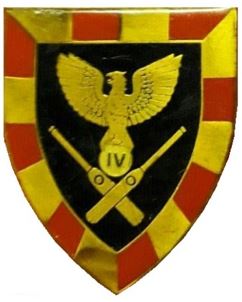 W
W4 Artillery Regiment is based at Potchefstroom, responsible for the training of soldiers allotted to Field and Medium Artillery.
 W
W7 Medium Regiment was based in Benoni, South Africa, and was responsible for the training of soldiers allotted to Field and Medium Artillery.
 W
WThe British Solomon Islands Protectorate Defence Force (BSIPDF) was the colonial military force of the British Solomon Islands Protectorate (1889–1978). The Solomon Islands has not had military forces since it became independent from Britain in 1976. Although the BSIPDF was very small, it played a significant role in the Solomon Islands campaign of World War II. The BSIPDF was commanded by the Solomon Islands' Resident Commissioner. During the Pacific War of 1942– 1945 6,232 indigenous Solomon Islanders enlisted in the BSIPDF and served in battles such as the Battle of Guadalcanal, alongside Allied forces, fighting the Empire of Japan. Another 2,000 enrolled in the separate Solomon Islands Labour Corps. Allied Coastwatchers in the Solomon Islands often cooperated with or served alongside BSIPDF personnel during operations throughout the Solomon Islands campaign.
 W
WThe Cape Corps and its predecessor units were the main military organisations in which the Coloured members of South Africa's population served.
 W
WThe Cape Field Artillery/ Nelson Mandela Artillery Regiment (CFA) is a reserve artillery regiment of the South African Army and part of the South African Army Artillery Formation. As a reserve unit, it has a status roughly equivalent to that of a British Army Reserve or United States Army National Guard unit.
 W
WThe Cape Town Highlanders Regiment is a mechanised infantry regiment of the South African Army. As a reserve unit, it has a status roughly equivalent to that of a British Army Reserve or United States Army National Guard unit.
 W
WThe Cape Town Rifles (Chief Langalibalele Rifles is an infantry regiment of the South African Army. As a reserve unit, it has a status roughly equivalent to that of a British Army Reserve or United States Army National Guard unit.
 W
WThe Corps of Colonial Marines were two different British Marine units raised from former black slaves for service in the Americas, at the behest of Alexander Cochrane. The units were created at two separate points during the war, and were later disbanded once the military threat had disappeared. Apart from being created in each case by Cochrane they had no connection with each other. The first Corps was a small unit that served in the Caribbean from 1808 to 12 October 1810, recruited from former slaves to address the shortage of military manpower in the Caribbean. The locally-recruited men were less susceptible to tropical illnesses than were troops sent from Britain. The Corps followed the practice of the British Army's West India Regiments in recruiting former slaves as soldiers. In the previous year, the Mutiny Act of 1807 emancipated all slaves in the British Army and, as a result, subsequently enlisted slaves were considered free on enlistment.
 W
WThe Durban Light Infantry is a Motorised Infantry regiment of the South African Army. It lost its status as a Mechanised infantry regiment in 2010 in line with the rationalisation of resources. As a reserve unit, it has a status roughly equivalent to that of a British Army Reserve or United States Army National Guard unit.
The Fiji Infantry Regiment is the main combat element of the Republic of Fiji Military Forces. It is a light infantry regiment consisting of six battalions, of which three are regular army and three are Territorial Force. The regiment was formed with the foundation of the Fijian armed forces in 1920, which came under the jurisdiction of New Zealand. The regiment, as it is today, goes back to 1978 following Fiji's independence. The Royal Australian Infantry Corps and Royal New Zealand Infantry Regiment conduct yearly training seminars and exercises with the Fiji Infantry Regiment
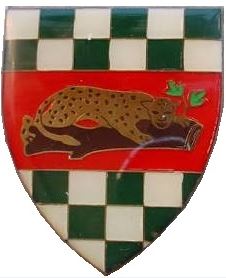 W
WFirst City is an air assault infantry regiment of the South African Army. As a reserve unit, it has a status roughly equivalent to that of a British Army Reserve or United States Army National Guard unit.
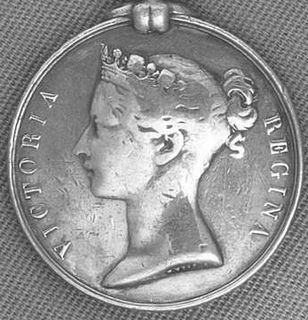 W
WThe Frontier Light Horse, a mounted unit of 200 volunteers, was raised at King William's Town, Eastern Cape Colony in 1877 by Lieutenant Frederick Carrington.
 W
WHis Majesty's Armed Forces (HMAF) is the military of Tonga. It is composed of three operational components and two support elements.
 W
WThe Indian Platoon was the only Fiji Indian military unit created in Fiji and existed from 1934 to 1941. The platoon was eventually disbanded following a dispute over pay.
 W
WThe Johannesburg Light Horse Regiment (JLHR), formerly the Light Horse Regiment (LHR) and Imperial Light Horse (ILH), is an armoured car reconnaissance unit of the South African Army. As a reserve unit, it has a status roughly equivalent to that of a British Army Reserve or United States Army National Guard unit. It is part of the South African Army Armour Formation and is based at Mount Collins in Sandton, Johannesburg.
 W
WThe 9th Signal Regiment (Radio) later Joint Services Signal Unit, Cyprus is a communications unit of the Royal Corps of Signals. The regiment was first formed to supply communications for the troops based in Palestine and Egypt but later provided communications for British Forces Cyprus.
 W
WThe Kimberley Regiment is an infantry regiment of the South African Army. As a reserve unit, it has a status roughly equivalent to that of a British Army Reserve or United States Army National Guard unit.
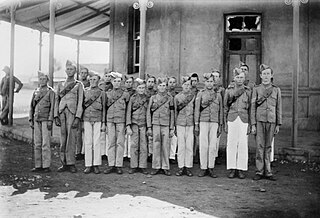 W
WThe Mafeking Cadet Corps was a group of boy cadets formed by Lord Edward Cecil shortly before the 217 day Siege of Mafeking in South Africa during the Second Boer War in 1899–1900. Cecil, the son of the British prime minister, was the staff officer and second-in-command of the garrison. The cadets consisted of volunteer boys below fighting age and were used to support the troops, carry messages, and help in the hospital. This freed up men for military duties, and kept the boys occupied.
 W
WThe Natal Field Artillery / King Cetshawayo Artillery Regiment is an artillery regiment of the South African Army. As a reserve unit, it has a status roughly equivalent to that of a British Army Reserve or United States Army National Guard unit. It is part of the South African Army Artillery Formation.
 W
WThe New South Wales Imperial Bushmen was a mounted regiment, consisting of six rifle squadrons, raised in the New South Wales colony for service during the Second Boer War.
 W
WThe New South Wales Marine Corps (1786–1792) was an ad hoc volunteer unit that the British Royal Navy created to guard the convicts aboard the First Fleet to Australia, and to preserve "subordination and regularity" in the penal colony in New South Wales.
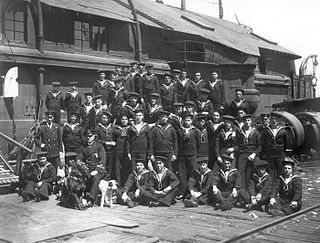 W
WThe Newfoundland Royal Naval Reserve was a military reserve force founded in 1900 in what was then the Newfoundland Colony, a part of the British Empire. From 1900 to 1902, approximately 50 members of the reserve trained each winter with the North American and West Indies squadron of the Royal Navy until a steam and sail powered training ship, HMS Calypso, was provided by the United Kingdom in 1902 for local drills before at-sea training with the NA and WI squadron. The reserve had 375 members by late 1903 and then between five and six hundred reservists until the start of World War I, growing to over 1000 in 1915. 1,964 Newfoundlanders served with the Naval Reserve in World War I, suffering 192 fatalities. The Reserve disbanded in 1920-1921. Calypso, having been renamed HMS Briton, was sold as a storage hulk and was burned for salvage near Lewisporte, Newfoundland and Labrador.
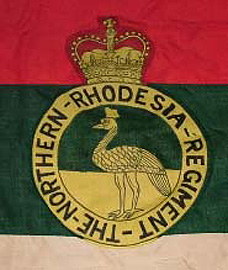 W
WThe Northern Rhodesia Regiment (NRR) was a multi-battalion British colonial regiment raised from the protectorate of Northern Rhodesia. It was formed in 1933 from elements of the Northern Rhodesia Police, which had been formed during Company rule in 1912. Made up of black other ranks and white officers, its motto was "Different in Race, Equal in Fidelity". This motto may have been adopted following native African porters during the First World War being recognised and compensated as couriers by the British.
 W
WPrince Alfred's Guard (PAG) is an infantry regiment of the South African Army. As a reserve unit, it has a status roughly equivalent to that of a British Army Reserve or United States Army National Guard unit. The Regiment is located in the city of Port Elizabeth.
 W
WThe Rhodesia Regiment (RR) was one of the oldest and largest regiments in the Rhodesian Army. It served on the side of the United Kingdom in the Second Boer War and the First and Second World Wars and served the Republic of Rhodesia in the Rhodesian Bush War.
 W
WThe Royal Pacific Islands Regiment (RPIR) is an infantry regiment of the Papua New Guinea Defence Force (PNGDF). The regiment is descended from the Australian Army infantry battalions formed from native soldiers and Australian officers and non-commissioned officers in the territories of Papua and New Guinea during World War II to help fight against the Japanese. Disbanded after the war, the regiment was re-raised in 1951 as part of the Australian Army and continued to serve until Papua New Guinea gained its independence in 1975, when it became part of the PNGDF. Today, the RPIR consists of two battalions and has seen active service in Vanuatu, Bougainville and the Solomon Islands.
 W
WThe Sandfontein Artillery Regiment is an artillery regiment of the South African Army, up to 2019 it was called the Transvaal Horse Artillery. As a reserve unit, it has a status roughly equivalent to that of a British Army Reserve or United States Army National Guard unit. It is part of the South African Army Artillery Formation.
 W
WThe Sarawak Rangers were a para-military force founded in 1862 by the second White Rajah of the Raj of Sarawak, Charles Anthony Johnson Brooke. They evolved from the fortmen which were raised to defend Kuching in 1846. The Sarawak Rangers were first commanded by William Henry Rodway, briefly in 1862 and again from 1872 to his retirement in 1881, and were highly skilled in jungle warfare and general policing duties, being equipped with various western rifles, cannons and native weaponry.
 W
WThe Transvaal Scottish Regiment is an infantry regiment of the South African Army. As a reserve unit, it has a status roughly equivalent to that of a British Army Reserve or United States Army National Guard unit.